
I’ve been working on edits for a few different book-sized projects for the past six months, and my brain feels like it’s melting. Which is the perfect time to share my best strategies on revision, what works, what doesn’t, and why I think the editing/revising process is where real writers are forged. YMMV and all that, of course. Take a grain of salt and let’s dive in, shall we?
But first, a digression. Way back in 2009, 2010, somewhere thereabouts, I wrote my very second book. It was destined to become my very first published novel, Ayesha At Last, except it didn’t know it yet (and neither did I). I wrote the first draft of that book in 3 months. I’m not sure how I accomplished that, either, considering I had a 5-year-old and a toddler at the time, and I was working full time as a public high school teacher. All I can say is that I wrote like a woman possessed.
I was so pleased with myself once I got to the end. My second book! And it was better than my first! High fives all around, ice cream for everyone. All I had to do was edit a bit, and then I would be A Real Writer. Woohoo!
It took me another 7 years to revise.
Seven YEARS. Approximately twenty-five different rounds of edits. Innumerable page-one rewrites. I gave up on the story several times, before I came back and started again. And I’m convinced that the reason for my pain and suffering was because while I knew how to write a book, I had no idea how to REVISE, EDIT, and REWRITE the damn thing.
And the difference between those two skills -- writing and editing? Well, that is often the difference between a writer, and a published author.
Yup, I said it. Hear me out.
Writing is creation. It is pure, unadulterated freedom. You have the literal universe at your fingertips. Play, frolic, make yourself laugh, cry, throw up. It’s all good. But at the end of your 80,000-words-or-more manuscript, after you have typed THE END and toasted yourself with delicious chai and treated yourself to delicious sushi (my hitting-a-goal-celebration-of-choice) then you’re left with a book-shaped thing…but not, exactly, a book. Especially not if this is your debut novel. The one that needs to dazzle and wow busy, overworked literary agents, and then busy, overworked editors.
I sent my first book out to literary agents in 2010, soon after I had finished “editing” my book. I received a handful of form rejections for my trouble, which was just what the book deserved. It wasn’t ready. It was done, but it was not EDITED.
All this to say: don’t be like me. Learn from my mistakes. Learn to edit, revise, and polish that first draft from a book-shaped thing into an actual book.
Now, almost fifteen years and four published books (with several more under contract) later, I can revise a book in 4-6 weeks for the first round of edits, and in 2-3 weeks for the second round. That sounds fast, but it took me a decade and a half of trying, failing, and learning to get here.
Every writer has their own approach to edits, and there is no one way that will help you get to THE END faster, or will ensure you have a publishing deal waiting at the end of this process. But this is what worked for me, particularly at the very start of my publishing journey; feel free to take or leave any of my tips and suggestions.
1) AFTER you have finished your first draft, let the book rest. One week, one month, six months, whatever time you can spare. Don’t look at your book. I mean it!
2) Print out the book. This might just be me, but I think it’s useful to see the book in its entirety on a different medium. If you can’t or don’t want to print it out, maybe do this next bit on an iPad or other tablet, something different from your usual drafting method. I print mine out because I like to stare at the 300-plus-pages and feel smug for a few minutes, before I dive into the next painful part.
3) Gather supplies: highlighters, post-it notes, reference books if needed, candy, caffeine, snacks, warm blankets, heating pads, cool compresses, smelling salts -- whatever you need to do a bout of focused work.
4) Start reading! And remember…this type of reading is ACTIVE. Make notes to yourself in the margin. What works? Give yourself a star. What joke made you laugh (again)? Highlight it. When/where does your mind start to wander? Cross out entire pages, draw giant question marks on parts you’re not sure about. If needed, rewrite on the page.
5) While ACTIVELY READING, also take note of the following:
i. Do most or all of my characters have a full and complete arc?
ii. Do the main characters grow and change over the course of the story, in substantial and meaningful ways that also further develop the main THEMES or message of my book?
iii. Do I have a theme or main message and can I articulate it (if only to myself)?
iv. Do my side characters have a quest of their own, aside from supporting or playing a foil for my main characters?
v. Is the setting clear, described, dynamic?
vi. Does my dialogue feel natural and authentic to my character’s age, personal circumstances, and personality?
vii. Do multiple characters play the same role, and can they be deleted from the narrative? Do I need to include additional characters to round out my main character’s personality or their quest?
viii. Does the story have flow, or do characters and events happen with no discernable cause or reason beyond ‘I need them to do this for the plot’?
6) Once you’ve finished this process (which can take up to to two weeks for me), input your edits, notes, comments, into the original document.
7) You can repeat steps 2-5 again, if needed. I definitely did this with my debut novel.

ALTERNATIVELY, instead of printing out the entire document, you can storyboard:
a. Using cue cards (I’m an analog girlie, but you can also use software that will do this for you), summarize every chapter or section of your book, one per cue card.
b. Organize cards on a flat surface. The first time I did this, for AYESHA AT LAST, I taped up my cue cards on my closet door. I later invested in a large bulletin board.
c. STARE at the cue cards for a week or so. Look for the following:
i. Does the plot make sense?
ii. Does each event CAUSE the next?
iii. Do the main characters have enough time to develop and change in substantial ways, and have you written anchor scenes to demonstrate their growth and change?
iv. Are your side characters taking over the narrative because they’re more fun to write and they get the best lines (true story)?
v. Is your novel well-paced?
Move cue cards around, or remove if unnecessary. AYESHA AT LAST started off with 75 cue cards (one per chapter), which I amalgamated down to 48!
8) Once you’ve storyboarded, stared, then storyboarded again, you’re ready to input the edits back into your draft.
9) Whether you’ve storyboarded, or decided to go with the print-and-read route, or both, once you’ve finished and input edits into your draft, you’re ready for the next phase: sharing your work. This is especially important if this is your first book. Find a friend who is a reader, or a fellow writer, someone who is willing, kind, and will get back to you in a timely manner. Share your book and wait for their feedback.
10) Listen to their feedback, even if you don’t agree. In film-speak, what’s the “note behind the note”? When I was writing AYESHA AT LAST, all of my early readers found Ayesha annoying. It came up so often, I knew I had a major problem with my main character.
11) Organize everyone’s suggestions, and go back to your draft to revise. Only use the notes that resonate with you!

13) Once you’ve done all of this, NOW you’re done writing your “first” draft. Congrats! High fives all around, ice cream for everyone!
What to do after this is a longer conversation about querying, trying to find an agent, and then entering the submission arena, but this post is already too long. I’m going to leave it here, and direct you to
for more!I’ll be taking a break over the holidays, but will be back in the new year, Inshallah. Until next time, friends!
--Uzma
Thank you for reading Uzma’s Substack! Subscribe for FREE to receive new posts and support my work. I have no plans to charge for any of my posts. If you’d like to support me in other ways, please share this post with others, or consider purchasing my books, or borrowing them from the library.
My books!
If you’ve enjoyed this post, you might enjoy my other work. I write hilarious, swoony, feel-good rom-coms that feature South Asian, Muslim Canadians:
Ayesha At Last
– Pride and Prejudice retelling set in a cosy Toronto neighbourhood, featuring quirky South Asian family, secrets, and lots of heated glances. Buy links: Canada United States UK
Hana Khan Carries On
Hana Khan Carries On – enemies to lovers, fated mates, rival halal restaurant owners, podcasting, and delicious food. Optioned for film by Mindy Kaling and Amazon Studios. Buy links: Canada United States UK
Much Ado About Nada
Much Ado About Nada – the New York Times said “it was, in a word, brilliant.” Persuasion retelling, angsty yearning, speed dating, Muslim rockstars, redemption. Buy links: Canada United States UK
Three Holidays and a Wedding (co-written with Marissa Stapley)
Three Holidays and a Wedding – A Good Morning America buzz pick, it’s a multi-faith holiday romcom! Christmas, Hanukkah and Ramadan rep, with two love stories for the price of one. Buy links: Canada United States UK
Have questions or want to share? Email me at ujalaluddin@outlook.com or insta @uzmajalaluddin
To find out more: www.uzmajalaluddin.com




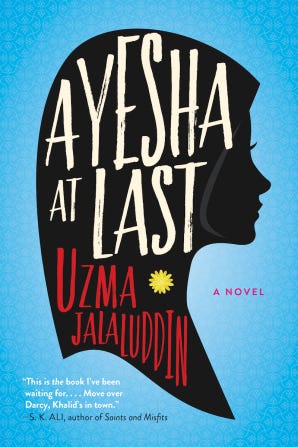

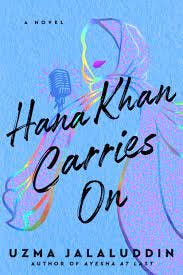

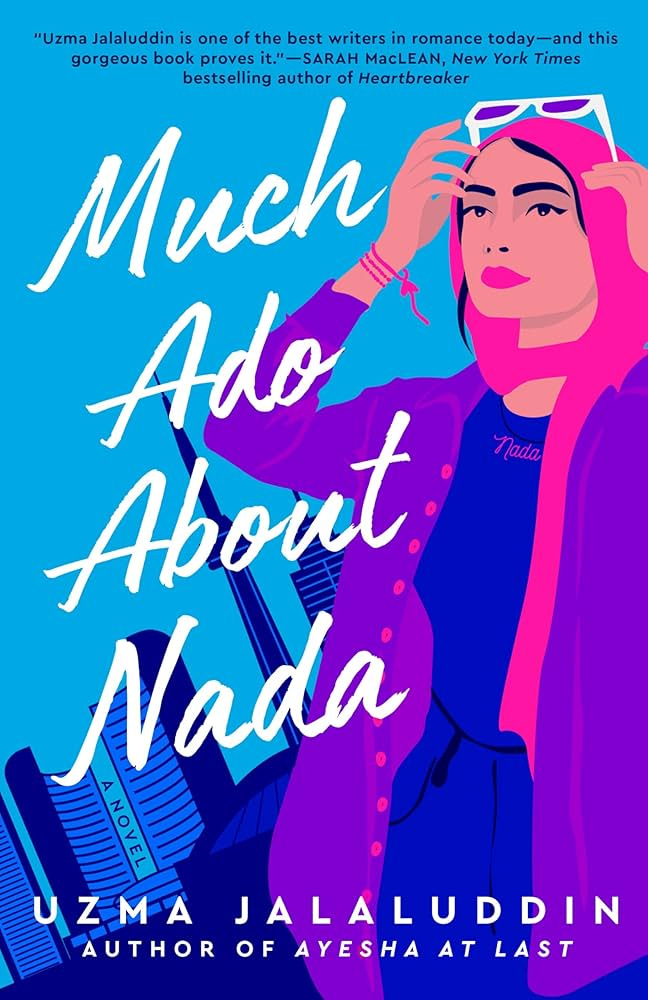
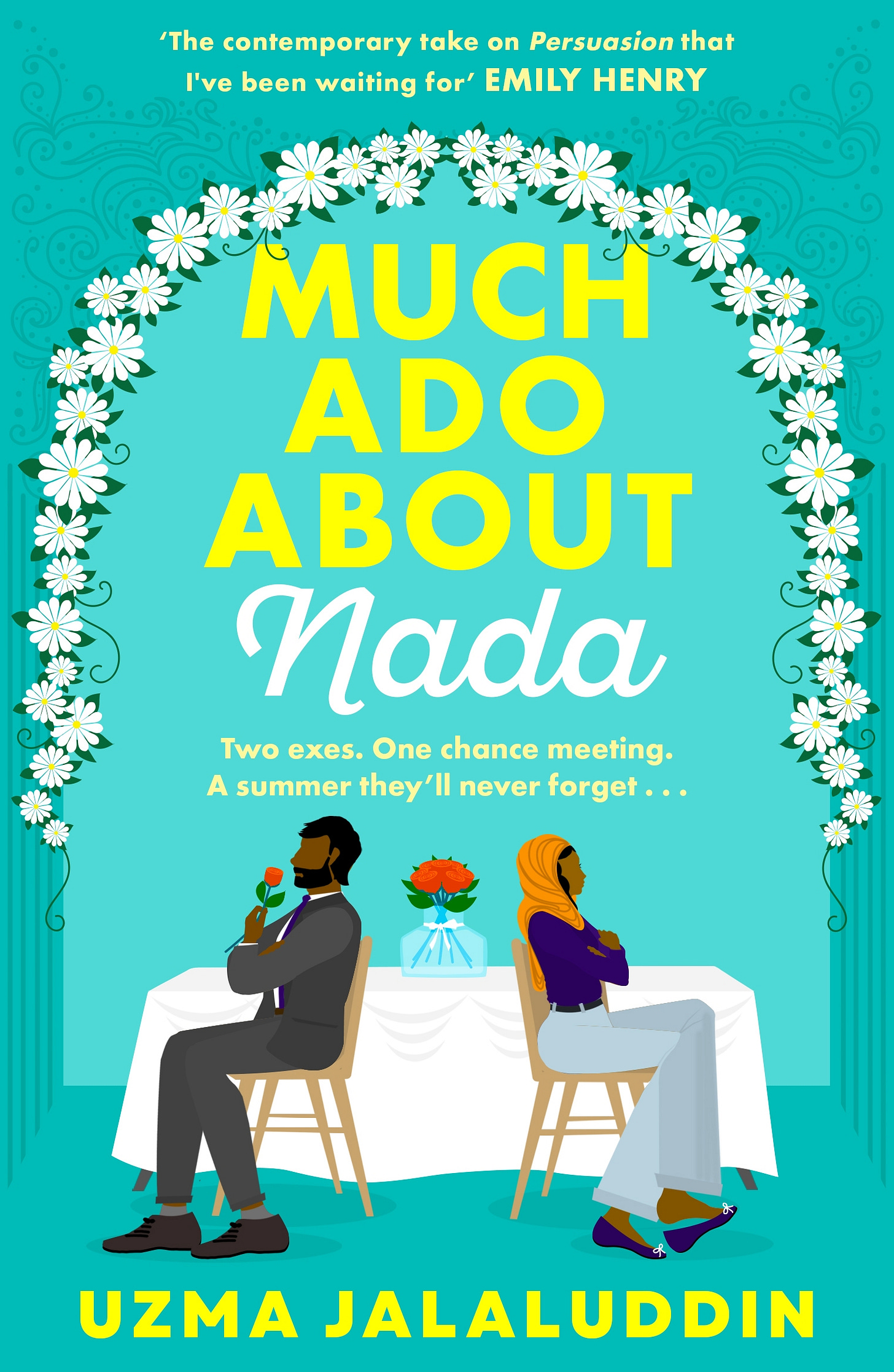
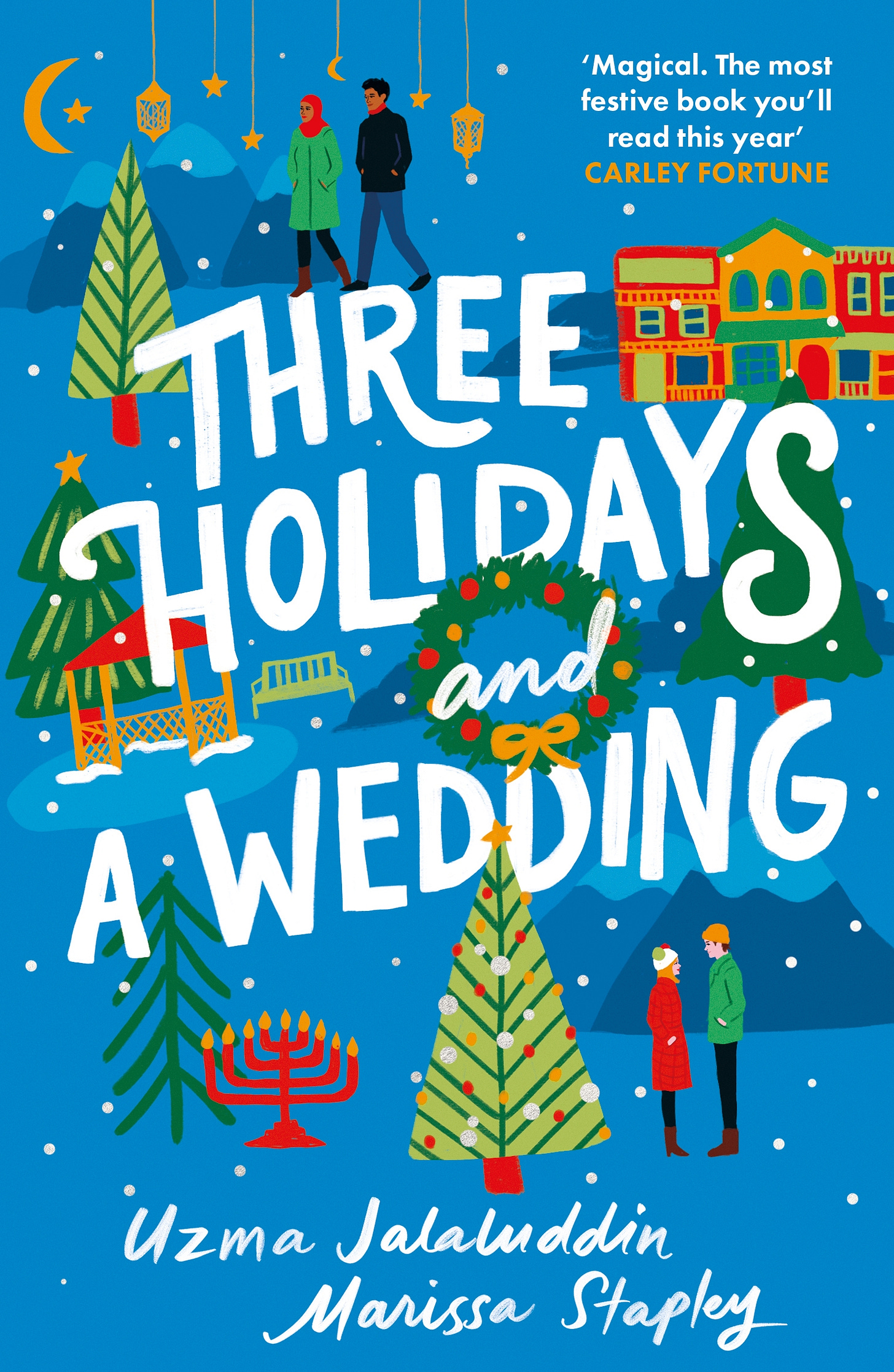
This was very helpful as someone interested in writing a book.
My favourite part: “AFTER you have finished your first draft, let the book rest. One week, one month, six months, whatever time you can spare. Don’t look at your book. I mean it!”.
This was so helpful and thank you for sharing how long it took you to revise your first manuscript! I’m in that stage right now and it’s so frustrating. But I took 6 weeks off after I finished my “first” draft and it’s so much easier. That doesn’t mean I won’t get stuck again. But your experience gives me hope!